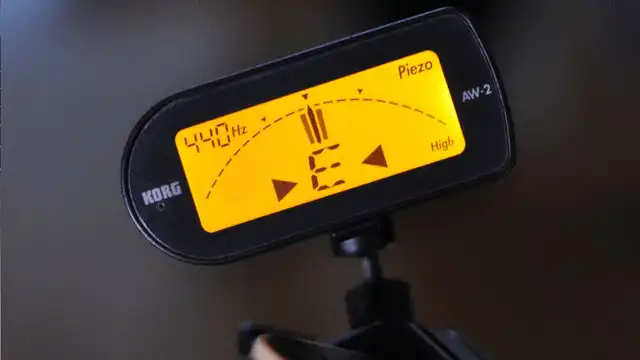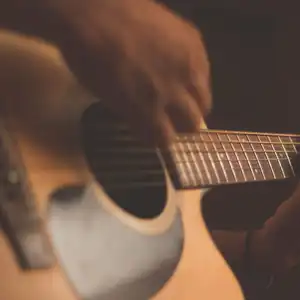New Standard Tuning: Robert Fripp's Alternate Tuning Explained


Robert Fripp's New Standard Tuning has one of the strongest cult followings among alternate guitar tunings. What is it? Where did it come from? Why's it good or bad?
Subscribe to Stringjoy on YouTube
Transcription
Throughout guitar history, there have been a ton of people that have made awesome inventions to the instrument and changed the entire paradigm of how we play the guitar, that themselves have not really played the guitar at all. And by the same token, there are a lot of players out there that are some of the best players in the world and yet they don't know a thing about gear. But every once in awhile somebody comes along that is not only an amazing player, but also is really, really savvy about guitar gear, and changes a little bit about the way that the guitar sounds or the way that we play the guitar, or is very, very innovative in their own way. Robert Fripp of King Crimson is definitely one of the latter.
Throughout his career, Robert Fripp has made countless innovations that have changed the way the guitar sounds and in a lot of cases changed even the way that the guitar is played. We're going to talk about one of those today. That's right. We're talking about New Standard Tuning.
New standard tuning was developed by King Crimson's Robert Fripp as a means of approximating all fifths tuning. Let's back up a bit. So the typical guitar string order is E, A, D, G, B, E. This is basically all fourths tuning with the exception of a third interval between the G and the B. This is really ergonomic for guitar players. You have four fingers (and a thumb) so when you're fretting you can basically use all those four fingers to hit the first four notes chromatically on a given string, and the next note up is going to be in general your open string.
Now, as a guitarist, we've become pretty used to this, but it's not necessarily standard across a bunch of different string instruments. If you look at the violin family, the mandolin family, a lot of these they're using fifths tuning rather than a fourths tuning.
All Fifths Tuning for Guitar
Now, in theory, this can be done on the guitar. Typically, people are either going C, G, D, A, E, B or they're going G, D, A, E, B, F#. That's in theory how you would do all fifths tuning on a standard guitar. The issue is that in the first tuning you're having to tune to a high B. So this is tuning up from your high E all the way up to a B, which is a really, really high note. Or otherwise, you're having to tune all the way down to a G, which is more common these days but is a pretty low note for a standard scale guitar.
Now, that said, all fifths tuning isn't unheard of. Jazz guitarists like Carl Kress have used this in some cases. Carl would go Bb, F, C, G, D, A. The thing that's different that made this work for Carl is that he would tune an octave down on that A, so his highest string was actually an octave lower, which is almost kind of like an inverted version of what a banjo is doing on the bottom end.
But in any case, Fripp wanted to do all this without having to tune down an octave or do anything too hairy on that end. But Robert Fripp, baller that he was, did not want to tune down an octave on the top end, so he was trying to find a different way to make it work. Initially, Fripp took the higher fifths tuning and tried to tune up to a high B at the very top, but he kept breaking strings. So he tuned down to an A, and still kept breaking strings.
But finally, Fripp settled on a G for the highest string in his tuning. So from lowest to highest new standard tuning, as he came to call it, goes C, G, D, A, E. G. So at the very bottom of all this, we're tuning down to a C, and at the very top we're tuning up to a G. So all together, this is a perfect fifths tuning with a minor third at the top from that E to G transition.
Now, lots of players over history have played in alternate tunings, so why does this one have such a weird name, and such an odd sort of cult following that's given it a lot of legs over the years? Well, Fripp started a series of courses called Guitar Craft in 1985 that taught over 3000 players over the 25 years that it ran and had a lot of really particular sort of things about it. Players that went through the Guitar Craft courses had to hold their picks in a very particular way, they typically use these triangular picks that kind of fit that ergonomic picking style, and then, of course they were forced to use new standard tuning in the courses.
Advantages of New Standard Tuning
So what were the advantages of this kind of funky tuning? Why was it that Fripp thought this would be not only good for him but good enough to teach 3000 players and most of all good enough to call it new standard tuning? Well, for one with all fifths tuning, well, all fifths and minor third tuning, you get extended note availability. So you have four more half steps on the bottom, tuning that low E down to a C and then you've got three half steps in addition on the top going from E to G.
Another big reason is that you have somewhat more logical open notes. C, G, D, A, and E make up the C major pentatonic scale, so anywhere you are you can always pull off to the C major pentatonic or a bar will always give you the notes of the pentatonic scale, which is pretty handy. Another big one is that you have super easy fifths basically anywhere in the guitar. You know how you like drop D, you like it, admit it. Well, think of new standard tuning is having dropped D anywhere on the guitar. Because you're always tuned in fifths you basically have power chords on any string if you just hit the next ring up at the same fret, so chug on friends.
The last big advantage is that moving chords around is easier because you don't have that odd interval in the middle of the strings. You basically can move chord shapes all the way around as long as you kind of forget about that high G. Everything else is just fifths, you can move it anywhere, move it up a string, move it down a string, whatever. It's always going to work fine.
Disadvantages of New Standard Tuning
So if you heard all that and you're like, sign me up, you might be wondering what are the disadvantages? I'll tell you.
Well, for one, anything that you've ever learned on guitar up to this point is no longer valid because it's a completely different instrument basically when you're in fifths, so any rifts that you came to like, chords, anything like that, yeah, it's all out the window. Another big one is that close intervals are like really, really hard. So playing thirds you have to stretch way out in order to play, which is kind of by design. Fripp really liked quartal harmony or quintal harmony, which is basically like the fourth of the scale and the fifth of the scale.
And so, for this, those are super, super easy because they're close by, but playing thirds and all that it's not fun unless you've got like bigger hands than me at least. The other big disadvantage, especially back when this was invented, was that strings were really, really hard to come by, but that's easier now. Yeah. You're welcome.
Best Strings for New Standard Tuning
So if you do want to try this and you want to get the right sort of strings in order to make this kind of work on a guitar you're going to want some custom string gauges. There are some sets that exist for this but they have pretty odd ideas of balance.
Here's what I would recommend for electric and acoustic.
Acoustic: .010 - .012 - .020w - .032 - .044 - .056
Get it here: https://bit.ly/2RM1ajp
Electric: .0085 - .010 - .015 - .026w - .038 - .056
Get it here: https://bit.ly/36qI4VH
Is New Standard Tuning Right for You?
One of the beautiful things about guitar is that like there's so many different ways to play it, so many different ways to tune it and change it to do what you want it to do. If you're looking for a totally different option, or maybe if you're switching from mandolin or violin or something like that and you're used to fifths this could be a really cool way to get that, or just a way to find something different and force you outside of your box or comfort zone.
I'm sure a lot of you that have messed around with these before know it way better than me, so by all means please feel free to share any resources you have down in the comments or any tips or advice or anything like that. I'm going to hang here, and you know, mess around with it a little bit more and see if I can come up with anything cool.
If you're eager to experiment a bit, but don't want to go quite as crazy as New Standard Tuning, step outside of your comfort zone just a little bit with DADGAD tuning, Nashville Tuning, or Open E Tuning.
Other Posts you may like

Guitar Strings Order: How the Guitar is Tuned and Why

Best Acoustic Guitar Strings for Beginners

Two Handed Tapping: Our Top 8 Tappers of All Time

Which Guitar Strings Wear Your Fret Wire Down More?

What is Nashville Tuning? Its History, Best Guitar Strings & Uses

Guitar Scale Length Explained: String Tension & Playability
0 Responses
Leave a Reply
Your email address will not be published. Required fields are marked *




